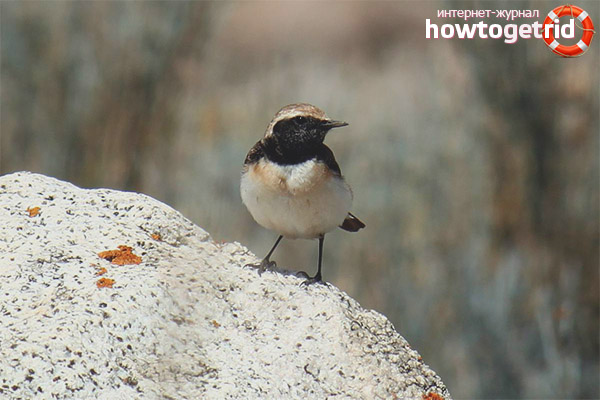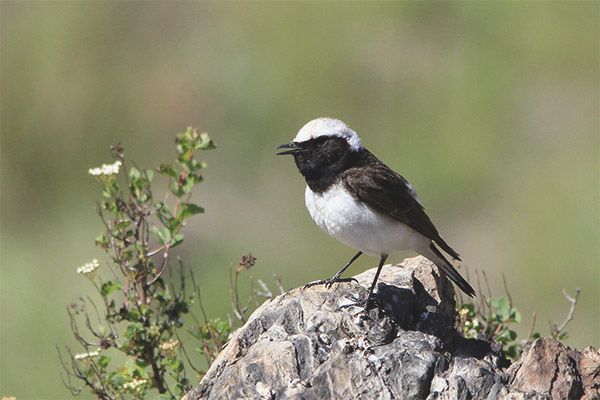The content of the article
This bird lives in the European part of Russia. It belongs to the group of passerines, also relates to the family of thrushes.
Plemenka heater is much smaller than ordinary heater. The length of her body is only 14 - 18 centimeters. Weight - from 15 to 22 grams. The manners of this type are similar to the manners of the ordinary. More like flying than moving on the ground.
Description
Males have a peculiar, contrasting color. Head with a former top, like a hat. On it sometimes small ripples in the form of dark specks appear. The wings of the birds are males, black in color and above and below. The back is also black in color, which makes it different from other birds of their family, for example, from the Spanish heater. The neck and chest are often black, but there are also individuals with white breasts, which is very rare. Their black mask on the head connects with black wings, a thin strip on the sides, pretending to be a real mask stretched over the eyes of the heater.The combination of a white cap and a dark mask looks very nice.
The female differs in that she does not shine with beauty, she has a dark shade of the whole little body. All its plumage gives a brown tinge. This makes it different from the birds of her family - the ordinary heater.
The male can be distinguished from the female. In the autumn period, a weak reddish pattern appears on her plumage, it is formed from the edges of the feathers of an individual.
Young birds differ, light mottled on their backs. Breast also has a motley look. Females and young birds in the fall are distinguished by tail patterns. They have a dark band on their tail, which distinguishes young birds and females. It is very similar to the Spanish heater, but one difference is - it is a dark back. It is important to note the fact that in areas of common habitat there are heaters hybrids.
Bird voice
Singing birds sounds very nice. It consists of whistles and individual chirps. You can often hear the sounds of other birds singing. There are no coarse and hoarse sounds.They love to sing in elevated places, or rising to the sky. They know how to issue warning signs of danger. Small but vociferous.
Spread

Place of residence of the fleeing heaters are steppe arrays. Steppes, deserts - their habitat. Unfortunately, in most of our steppe territories, it is possible to meet her, but only in rare cases. The bird loves the terrain, with different types of humps and burrows located on the ravines that occur in the steppe massifs. There were cases when she was met in the north in the taiga.
Prepare for the flight later than other birds. Autumn departure takes place from the middle to the end of September. Winter is spent on the African continent.
Lifestyle heater
It inhabits open areas with pronounced relief. Most of all - in the hilly steppes, on rocky lunges. He chooses a place of residence on cliffs of ravines, steep banks, on the ruins of buildings. They nest in shelters between stones, in rock crevices, in crevices of the coast. They love to make their nests in burrows, the depth of which is 30-35 centimeters.The building of the nests is made of grass, from the bark of a tree, wool, horsehair.
But after the appearance of chicks, he takes an active part in their feeding. The female and the male together take care of the children, not yielding to each other in agility. According to the observations, the spike heater lays eggs only once a summer. Birds feed on all kinds of insects, they do not refuse vegetation. They love different kinds of berries, and if somewhere a garden or a field with strawberries, it suits them.
When autumn comes, they are going to fly again. The path is far, but they are accustomed to spend the winter in Africa. Next year they will fly again to breed. The life of birds is interesting.Although they have a tiny body, they have a lot of power to achieve goals. The Plesenka heater is small, but there are so many beautiful modulations in her singing. Everyone who hears will be heard.
Video: Spray heater (Oenanthe pleschanka)











To send